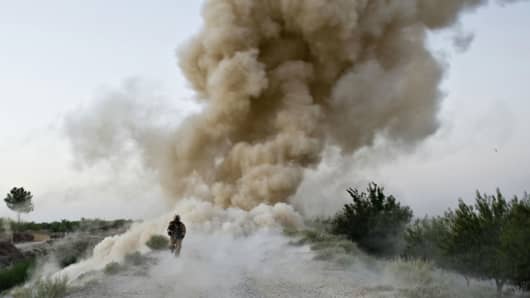
The global war on terror is fueling demand for robotic and other technology that can defeat or detect improvised explosive devices, or IEDs.
The counter-IED market is forecast to reach $2.03 billion by 2022, up from an estimated $1.78 billion at present, according to Research and Markets, a European research company. That will put it at a compound annual growth rate of just under 3 percent during the five-year forecast.
One major area has been UAVs deployed by militaries in conflicts for surveillance of IEDs, while another is handheld technology or systems designed on armed vehicles to defeat the bombing devices. There’s also been increasing use of bomb detection and disposal robots.
The IEDs used by the Islamic State terrorists have targeted both soldiers and civilians. Deadly bomb attacks by the terror group sympathizers also have rocked major cities in Western Europe.
Large U.S. defense firms active in the counter-IED space include Lockheed Martin, General Dynamics, Northrop Grumman and Raytheon. There also are foreign companies, including Israel’s Elbit Systems and France’s Thales.
“The military segment is expected to lead the counter-IED market in 2017,” according to the report. “Militaries of different countries are the major end user of different types of counter-IED equipment and devices as they continuously face the threats of improvised explosive device blasts.”
Lockheed’s Symphony Block 40 is a counter-IED system used to support coalition forces in Iraq, Afghanistan and other areas of conflict. The vehicle-mounted system uses jamming or electronic signals and is designed to combat radio-controlled IEDs.
There are currently more than 4,500 of the Lockheed counter-IED systems supporting U.S.-led coalition forces around the globe. The company’s electronic warfare system also can help save the lives of civilians.
Northrop’ also has a counter-IED system featuring jammers known as JCREW. It has received several contracts with the U.S. military for the technology, which was developed several years ago.
Raytheon has been in the counter-IED space for more than six years and it currently has a robot-mounted system known as GroundEye, which is used to detect buried IEDs or other concealed threats.
[“Source-cnbc”] Techosta Where Tech Starts From
Techosta Where Tech Starts From
